#portals is fun and puzzly
Explore tagged Tumblr posts
Text
I just want you all to know that I beat the Least Steps challenge for Chamber 16 of Portal (one of the most evil challenges ever inflicted by man upon man) by 15 steps instead of the required 40

and I am feeling very unhumble about it
#portal#video games#(there are three challenge variants: least portals / least steps / least time.#portals is fun and puzzly#time requires nerves of steel and is basically a speedrun#but steps#steps was invented to simulate the slow onset of brain death.#)
10 notes
·
View notes
Text
Link's Awakening DX (Review)

-Part 1: My History with the Series-
So, let's start with a bit of background. Before this year, I had never finished a Zelda game, or even played one for longer than an hour or two. I remember watching my dad play through the entirety of Ocarina of Time when I was a little kid, and I have hazy memories of trying out Wind Waker, Minish Cap and Majora's Mask. But for some reason, Zelda as a franchise never quite caught on with me. I had a mild interest and appreciation for the series from a distance, but certain aspects of the gameplay turned me off growing up. As a kid who loved platformers and Metroidvanias where fluidity of movement is vitally important, playing as Link in those games just felt awkward - he couldn't jump, he was sluggishly slow, it seemed as if you had to constantly go into your inventory to switch out items, and a lot of the puzzly elements felt obtuse, unintuitive, and dragged the pace even further to a crawl. For me it left the impression that Zelda simply wasn't a series I could enjoy playing.
As I got older, though, I can see how that may have changed. I got into more games where puzzles play a central role, like Portal and the Silent Hill series. In fact, Silent Hill's methodical lock-and-key based exploration isn't entirely dissimilar to Zelda's dungeon crawling! And a couple of my favorite games I've played in the past few years owe a massive debt to Zelda, wearing the influence proudly on their sleeves. The first, Nier Replicant, is structurally, narratively, and to some extent mechanically a twisted homage to Ocarina of Time. And my game of the year for 2022 (which I also reviewed!) is a little indie title named Tunic, which could not be more open in its reverence for Zelda if it tried.
My love for these two games, combined with my love for all the friends I have who've been pushing me to play some Zelda for ages now, is what finally got me excited enough to try Link's Awakening DX for the Game Boy Color.
-Part 2: In the Shadow of a Masterpiece-
Awakening is an odd little game and I'm coming at it from an odd place, too. You see, I started playing it a couple months ago, cleared six out of eight dungeons, got forcibly sidetracked by a heap of real life stuff, then two or three weeks ago I started on a different Zelda game that came before it, A Link to the Past, which I've now played, replayed, and even dipped into randomizer runs before finally coming back and finishing my Link's Awakening playthrough.
And I'm glad I did, because it threw into perspective just how much Awakening lives in the shadow of ALttP. It's a smaller entry on more limited hardware that serves as the follow up to a certified classic that laid the groundwork for decades of subsequent Zeldas and Zelda-likes to come. ALttP has not one but two sprawling overworlds that work in tandem with each other, and it marries exquisite combat scenarios with a strong puzzle solving element and an item based progression system reminiscent of Metroid. The items themselves are tremendously fun and addictive to use (the Pegasus Boots, the Hookshot, the Fire Rod, etc), with almost every piece of your eventual loadout remaining useful and serving an essential purpose in combat scenarios as well as exploration. A Link to the Past is jaw droppingly expansive yet compact, a tour de force of world and dungeon design where every piece fits perfectly in its place.
So why am I reviewing Link's Awakening instead, when it's a significantly weaker experience that never stood a chance against its wildly successful older brother? Well, for one thing, it's because there isn't much more I could say about ALttP that hasn't already been said better by other people, and I'd just keep gushing about how great is it for sixty paragraphs. And that's boring!! I'd rather talk to ya'll about a flawed, dinky little weirdo game that not as many people have played and celebrated.
And yes, I know there's a 2019 Switch remake of this game that rebuilds it from the ground up with new graphics and music, a better button layout, and even more secrets to find. (I've already dubbed it Link's Remakening when chatting with my friends.) But it was important to me to experience this game in an older form first to better appreciate its place in history and how that remake chooses to "modernize" it when I inevitably get around to playing that too. And hey, I think the way the best Game Boy titles made the most of their hardware is pretty neat! I find the "dated" graphics charming and it features a trio of composers that made excellent use of the sound chip, among them a brilliant lady named Minako Hamano, of Super Metroid and Metroid Fusion fame...or at least I wish she'd receive more fame and credit.
Because damn, when you first boot this game up you're hit with a stormy screen and a hauntingly foreboding piece of music, depicting Link on a raggedy little boat struggling to stay afloat in a violent sea that looks poised to swallow him whole. Then a strike of lightning comes down, the screen flashes, and we transition to a tranquil beachside while a far more mellow track plays. We see a lone girl walk down the shore to find an unconscious Link washed up on the sand. Then the camera pans up while the iconic Zelda theme kicks in and we see a distant mountain with a giant egg and a ring of clouds at its peak, as the title of the game appears at the top of the screen just like in the image I opened this review with.
-Part 3: An Island of Dreams-
This moody little intro immediately sets the tone and feel for Link's Awakening as a whole. It's a surreal, melancholy, dreamlike little game that appeals to the player's emotions through sound, subtle character moments, and imagery that will stay with you. While Awakening draws inspiration from ALttP in many respects, it also pulls away from it by telling a more intimate and personal story than the monomythic quest to save Hyrule.
That girl in the intro who rescues Link is named Marin, and the game proper begins with Link awakening (hehe) in her house. Her dad, Tarin, gives you back your shield and the two of them let you know that you're on Koholint Island and your sword should still be sitting around the beach somewhere.
Because Link is effectively you, the player, the game is trying to make you feel a couple things here. It wants you to like and care about Marin and her dad, so it has them be as nice and helpful to you as possible. And by extension, knowing there are monsters threatening them and their village gives you a reason to wanna protect this place in addition to solving whatever mysteries you may find here.
Awakening, you see, puts a lot of love and effort into its setting and NPCs. By injecting more flavor, sensitivity and humanity, with a cast of quirky oddballs, it left its mark on the Zelda series in a way that's still felt today. It even has an item trading sidequest that has you going around the entire island talking to people! And while most of the sidequest isn't mandatory, completing it is necessary to get an item that for most players will be needed to finish the game. In other words, Awakening really pushes you to get to know Koholint and its inhabitants, and hopefully grow to care for them and feel the weight of your main quest's consequences.
That main quest, as it turns out, is to wake the Wind Fish that slumbers in the enormous egg atop Mount Tamaranch at the north end of the world map. This requires collecting instruments from each of the eight dungeons scattered across the island...so let's talk about those dungeons.
-Part 4: Into the Labyrinth-
To reach most of them, you'll first need to explore the overworld and complete some random, often pretty strange tasks to find a key that will open the way to the dungeon. For instance, getting to Eagle's Tower requires you to bring a stone rooster to life and fly it across gaping chasms you couldn't cross with just the Hookshot. It's pretty weird.
The dungeons themselves deviate and elaborate on the structure used in ALttP in a few ways. Instead of finding a "big key" that gives you access to a "big chest" and unlocks the rest of the dungeon, more emphasis is placed on the central upgrade you find halfway through. The first leg of a dungeon typically has you wandering around, hitting lots of dead ends until you finally get your hands on the new item and suddenly the rest of the dungeon will open up for you, because now you can complete the environmental puzzles necessary to push further in. Likewise, where bosses in ALttP presented challenges mainly for you to resolve with your sword, bow or fire rod, the bosses in Awakening almost all demand that you use your shiny new upgrade as the means to defeat them, like the genie in Bottle Grotto whose bottle you need to toss at the wall with your new Power Bracelet. In some ways this creates for more gimmicky boss design, and most of them are pathetically easy compared to the genuine adversity ALttP throws at you, but it's an approach that allows each dungeon to more clearly identify with its central item. And I'm told that becomes the norm in future Zeldas!
This upgrade-driven progression also speaks to an overall shift more into the Metroidvania lane for Awakening. The fact that the game takes place in a smaller, tightly knit map full of roadblocks you'll need to use your full item kit to bypass contributes to this as well, with new shortcuts opening up as you go. And it's a good thing the overworld is pretty small compared to ALttP, because the screen size is also painfully tiny and thus so is your view of the immediate surroundings. With all the pauses for screen scrolling it has to do, it's good that the game doesn't bite off more than it can chew and for the most part avoids being too difficult to navigate (though I still got lost and turned around more times than I'd like).
And I gotta be honest here, progression in this game can get pretty wonky. Sometimes the devs lean too far into the realm of dreamlike chaos and present you with puzzles and gating that just doesn't seem to have any intuitive logic behind it. One minor example is when the game expects you to open a locked door by...throwing a pot at it. This is not set up at all and you have no reason to think this particular door is so different from every other door up to that point which is unlocked by a key or by clearing out the room's enemies. Similarly, that thing I mentioned earlier about bringing a rooster to life takes a series of steps so bizarre and illogical that I was dumbfounded when I looked it up.
That's not to say Awakening is lacking in puzzles that were a pure joy to solve, because there were some amazing "ah ha!" moments that gave me the same sense of excitement and satisfaction that Tunic so often did. That lightbulb going off is the high I was chasing when I started my quest to play every major Zelda game, and Awakening sometimes delivered. Not to spoil too much, but there's a moment in the third dungeon, Key Cavern, where you realize you can combine the effects of two upgrades to do something super cool that you'll go on doing in various places for the rest of the game. And if you have a hunger like I do for "puzzle box" dungeons that require you to interact with the environment in ways that dramatically alter it and gain the spatial awareness to navigate it intelligently, then Eagle's Tower will be the highlight of your playthrough. It's been a few days and I'm still thinking about how brilliant that dungeon was. While ALttP is by far the better game overall, its steady consistency stands in stark contrast to the highs and lows of playing Link's Awakening.
There are other evolutions to the dungeon formula, too. A big one is the change in functionality of the compass - in ALttP, all the compasses would do when you found them is mark the boss room on your dungeon map. This was pretty useless since the geography of dungeons in that game will naturally lead you in the boss' direction regardless. On the other hand, Awakening's dungeons tend to be far more labyrinthine and confounding, so this basic quality to the compass is inherently more valuable. But wait, there's more!! In Awakening, the compass now also plays a jingle when you enter a room with a hidden key, and it marks every unopened treasure chest left to find on your map! This makes the compass so much more vital to finding your way and uncovering secrets.
And the last thing about dungeons I need to point out is the addition of sidescrolling segments, with some light platforming and even cameo appearances from Mario enemies, like goombas and piranha plants. Because yeah, this game has platforming. The first dungeon upgrade is the Roc's Feather, which lets you jump in a Zelda game that isn't Zelda II, almost 25 years before Breath of the Wild! You can only imagine how giddy I was to have this item and how much fun I got out of it across my playthrough.
-Part 5: Why This Game Sucks Actually-
However, speaking of the item inventory...this is where we have to address one of Awakening's most painful flaws. Inventory management in this game is excruciating. Because it's on the Game Boy, you can only assign items to the A or B button, and every item you obtain is bound by this system. Where ALttP had picking up pots and rocks as a context sensitive A press, Awakening has you go into the menu to bind the Power Bracelet to A or B every time you wanna lift anything up. Likewise, where the Pegasus Boots were just a press and hold A to charge up in ALttP, in Awakening you have to button assign it if you wanna use it. Every single time.
What makes this worse is that every time you brush up against a liftable object without the Bracelet equipped, you get a long, slow, unskippable text box telling you that you can't lift it. This is pretty bad at the start of the game when you don't have the item, but it becomes unbearably bad later on when you already know that, god game shut up!!
What makes it somehow even worse than that is the fact that the game's overworld seems tailor made to exhaust you with constant, and I mean constant dips into the menu to switch out items. There are so, so very many obstacles to get around. Rocks you need to switch in the Bracelet for. Pits you need to switch in the Feather for. Enemies you need to switch in your sword for. Blocks that can only be broken with the Pegasus Boots. Gaps you can only cross with the Hookshot. It adds up, and while you get used to it, it makes traveling from one end of the map to the other a tedious ordeal.
Fixing this issue, above anything else, is something I feel like Link's Remakening (2019) has to offer over the original. From what I hear, all your most necessary upgrades are generally already bound to buttons on the controller and stay that way, dramatically minimizing the amount of menuing you have to do. I look forward to re-experiencing the game in this way at some point, because good gravy is it a problem in the og version.
-Epilogue: I Love it Anyway-
Despite some frustrating flaws that hold it back, though - some of which are a consequence of the hardware, some of which are just questionable choices on the part of the dev team - I would still say Link's Awakening DX is a lovely little game that showed a whole new side of Zelda and maintains its own special place in my heart. Koholint Island is a setting I can't help having fond affection for, with its wacky characters, poignant story, whimsical locales and the fascinating risks and experiments the devs took in making it. The director apparently said he felt as if they were making a "parody" of Zelda, and I can see it. Parts of this game feel like a weird romhack more than a fully polished official product. But that's part of its enduring charm, and I'm thankful for the strange, dreamy journey I got to take with Link, Marin, and all the rest. They'll stay somewhere in my memory, like a sad and silly dream that lingers after you wake.
11 notes
·
View notes
Text
Best Games of 2011
Well, this is where we’re at. In 2011, video games were still taking a backseat to board games for me, so there are only a couple of games here I really value in any meaningful way, and the rest is just snark, or “Oh, this game seems alright.” I couldn’t come up with 10 or, arguably, even 5.
Again, the lack of funding and oversight are really glaring here.
7? Catherine
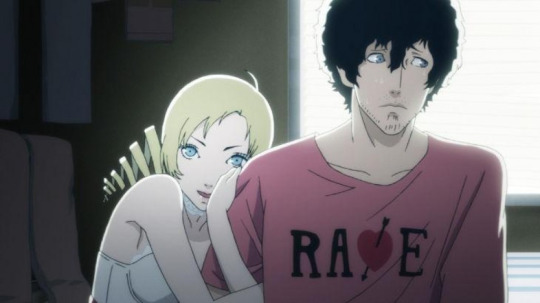
I usually like Atlus games, but this one seems horny and I guess the original was transphobic in places but they edited it out in the remaster, and the videogamey parts are puzzly in a way that might suck, and I guess a game can be horny but Catherine looks like a weird, immature Three’s Company “ZOINKS I HOPE MY GIRL DOESN’T CATCH ME CHEATING” way. It might be good.
6. Yakuza 4
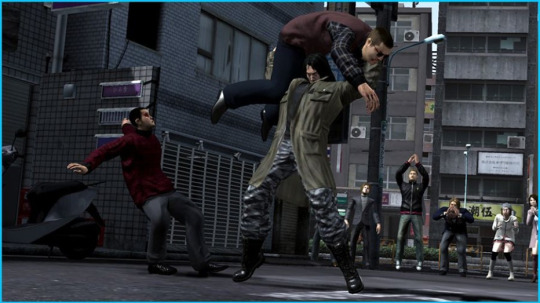
I only just played this game in 2020 as part of the Yakuza Remastered Collection, but after Yakuza 0, Kiwami, and Kiwami 2, I started hitting Yakuza fatigue. What I played was good and I’m sure it’s high on this list in the alternate timeline.
5. Minecraft
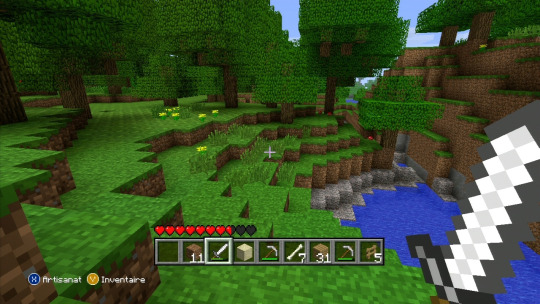
I remember spending $10 to get access to the Minecraft beta years ago. The game dropped me into a blocky world with no tutorial, no manual, nothing. I remember punching some trees and punching dirt, then night fell and there were groaning, exploding green dudes after me. I dug into the side of a mountain and walled up the hole with dirt and waited for them to go away. I did some googling and discovered that you could build a crafting table, and from there find and craft a whole host of goodies.
I didn’t play much after that. I could tell that it was something special for the right kind of person, but that person isn’t me. A box of Legos with no instructions makes me anxious; I don’t want to be in an open-ended sandbox and find my own fun. Minecraft is a brilliant game, a generational phenomenon. My kids love it. It has evolved into something so different from that early build that I saw. But it’s not for me.
4. Jamestown

I grew up playing shmups like Sky Sharks, 1942, and Blazing Lazers. This is a good throwback to those.
3. Skyrim

I liked Oblivion, and Skyrim felt like more Oblivion to me. It’s alright. I’m sorry.
2. Bastion
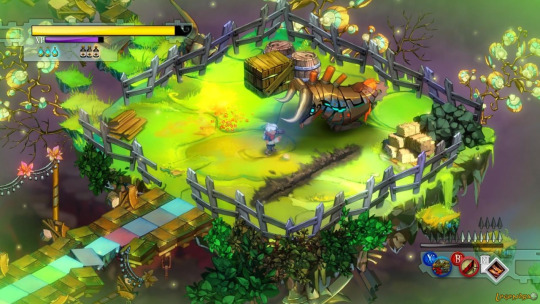
Fucking finally. A game I really feel good about. Bastion’s gameplay is solid - not spectacular - but solid. The game has a wide variety in weapons to choose from, and modifications for those weapons. I love customization in games, and Bastion has that. What makes it special though, is the music and the narration. If you know me, you’re probably sick of me blathering about how much I love Supergiant games. I don’t have as much affection for Bastion as I do for their later games, probably because I came to Bastion years after its release. That said, I replayed it last year and it’s still a brilliant game.
1. Portal 2
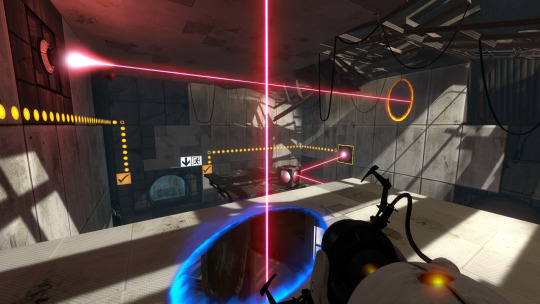
So maybe 2011 wasn’t such a great year for video games. It’s like a Rush album that maybe isn’t a favorite of mine, but still has at least one absolute banger on it. That’s Portal 2. Valve did the impossible and somehow followed up Portal with a game that was as good, if not better. It maintained the personality and charm of the first game without overplaying it, and it added new characters and game mechanics that felt right at home. It also added a robust cooperative mode that was at least as memorable as the single player campaign for me. Of all the dead Valve franchises, Portal is the one I’d most like to see resurrected.
2 notes
·
View notes